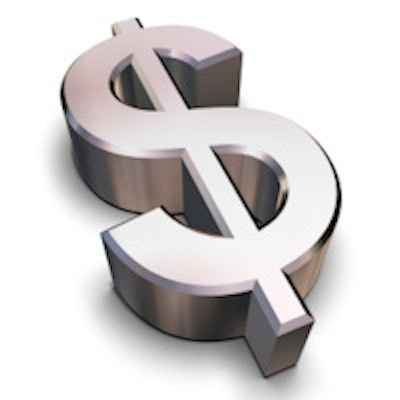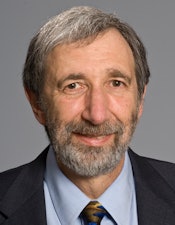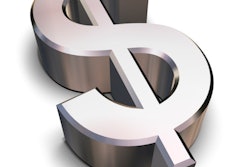
Dental care costs will soar 60% by 2025 in the U.S., according to a new report in Health Affairs. Dental experts say the cost of oral healthcare has risen sharply since 2000 and has increased at twice the rate of inflation for decades.
The figures on dental spending were part of an annual report on overall healthcare spending released by the U.S. Centers for Medicare and Medicaid Services (CMS). Spending on healthcare in the U.S. is expected to increase an average of 5.8% a year during the next nine years, for a total projected increase of 68%, and will represent 20.1% of the total economy by 2025, according to CMS researchers (Health Affairs, July 13, 2016).
"Projected national health spending growth, though faster than observed in the recent history, is slower than in the two decades before the recent Great Recession," the researchers noted.
Hospital care, insurance costs to grow
Although dental care is expected to increase 60% in the next nine years, other medical costs will rise even higher (see tables below), the researchers wrote.
| Projected U.S. expenditures in healthcare costs (in billions) |
||||
| Service | 2016 | 2019 | 2025 | % change |
| Dental services | $123.6 | $143.7 | $198.9 | +60% |
| Hospital care | $1,067.3 | $1,259. | $1,800.5 | +69% |
| Durable medical equipment | $50.4 | $58.9 | $85.5 | +70% |
| Home healthcare | $92.2 | $109.2 | $159.5 | +73% |
| Net cost of health insurance | $220.4 | $263.7 | $382.6 | +74% |
| Prescription drugs | $342.1 | $418.6 | $614.5 | +80% |
| Government administration | $47.3 | $57.7 | $87.3 | +85% |
| Annual projected growth of U.S. healthcare spending | ||||
| 2016 | 2019 | 2025 | % change | |
| Prescription drugs | 6.3% | 7% | 6.6% | +0.3% |
| Government administration | 6.6% | 6.8% | 7.2% | +.6% |
| Net cost of health insurance | 5.1% | 6.2% | 6.4% | +1.3% |
| Dental services | 4.2% | 5.2% | 5.6% | +1.4% |
| Hospital care | 4.7% | 5.7% | 6.1% | +1.4% |
| Home healthcare | 4.5% | 5.8% | 6.5% | +2% |
| Durable medical equipment | 4.2% | 5.3% | 6.4% | +2.2% |
Effects of ACA, Medicare, Medicaid
After the initial effects of the Patient Protection and Affordable Care Act (ACA), growth in healthcare spending will be influenced by changes in economic growth, faster growth in medical prices, and the aging population, according to CMS researchers. Although healthcare spending has risen sharply in the last couple of years, the growth is slower than in the two decades before the recent recession, they noted. This is partially caused by increasing cost sharing in private health insurance plans and Medicare payment updates.
Growth in Medicare spending also is projected to accelerate (6.7% average annual increase) because of the aging of the baby boomer population. By 2025, 1 in 5 U.S. residents is expected to be covered by the program. In the next three years, Medicaid spending is expected to increase at a 5.6% annual average, partly due to aging and disabled beneficiaries who require more expensive care. The number of uninsured U.S. residents is expected to fall to 8% in 2025, down from about 11% in 2014.
The cost of private health insurance is expected to grow (5.6% average) because of rising incomes, high-cost specialty drugs, and faster growth in drug prices, the authors noted. Federal, state, and local governments are expected to pay almost half (47%) of healthcare costs by 2025, they wrote.
"Many Americans are gaining access to health coverage for the first time, aging into Medicare, or finding that a greater share of their health expenses needs to be paid out of pocket," they concluded.
Rapid increase in dental care costs
The cost of dental care has gone up 300% since 2000, according to Paul Glassman, DDS, MBA, who has advocated innovative approaches to the dental delivery system. Dr. Glassman is a director of the Pacific Center for Special Care at the University of the Pacific Arthur A. Dugoni School of Dentistry.
 Paul Glassman, DDS, MBA.
Paul Glassman, DDS, MBA."The crown that used to cost $300 now costs $3,000," Dr. Glassman told DrBicuspid.com. "It's not that people are getting more crowns, dental care is a lot more expensive than it used to be. The price of dental care has been going up at twice the rate of inflation for many decades."
But Dr. Glassman noted that increased costs for dental care have not resulted in improvements to oral health in the U.S.
"It's a big increase in terms of dental spending, but it's important to understand that it doesn't translate into a 300% improvement in the health of the population," he stated.
Roger P. Levin, DDS, founder and CEO of the Levin Group, doesn't agree with CMS forecasts regarding the increasing dental costs.
"At Levin Group, we are not currently observing any indications that growth will accelerate to the level projected in the report," he wrote in an email to DrBicuspid.com.
Although costs for dental care will increase, dentists' incomes will continue to decline, primarily due to lower insurance reimbursements, according to Dr. Levin.
"Even with significant growth suggested by the report, we note that dental insurance reimbursements are declining, and we anticipate they will continue to do so," he wrote. "That dynamic could offset any growth to income for the practice and, as a result, practices may not experience the projected revenue increases that may be inferred by the report's projections."
Higher costs but not more care
Despite the soaring cost of dental care, most people still aren't getting adequate oral care, Dr. Glassman said.
"The dental industry is serving less than half the population; about 65% don't get regular care," he noted.
There has been on ongoing debate about the supply of dentists, Dr. Glassman said. A 2105 federal report projected a shortage of dentists by 2025, but there's a surplus of dentists who aren't busy enough, according to the ADA.
"Most people haven't been getting dental care and will continue to not get care," he said.



















